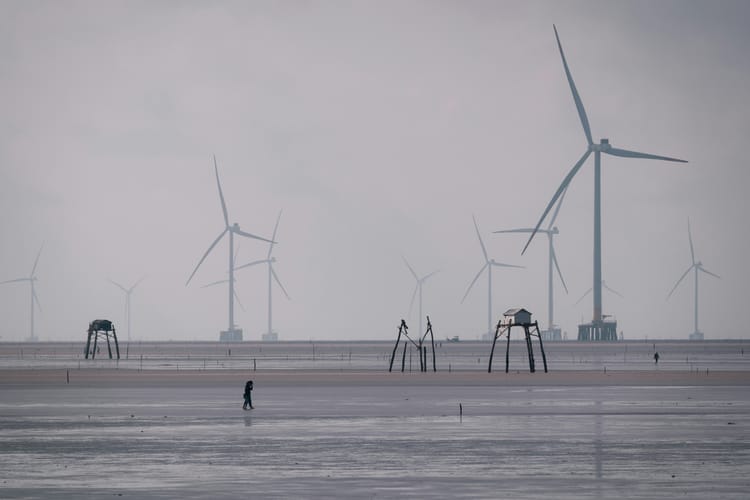CSO Futures Weekly: Appointments and disappointments

Welcome to this new edition of CSO Futures Weekly, featuring interviews, insight and intelligence for Chief Sustainability Officers from our site and beyond.
CSO moves: Northwest Bank, Hind Management, Mahindra Group and more

Since the start of July, new Chief Sustainability Officers have been appointed at WE Soda, Hind Management, Northwest Bank, Mahindra Group and more.
This week alone, three companies announced new CSO appointments. Alan Knight has taken on the newly-created position at UK-based soda ash and sodium bicarbonate producer WE Soda, reporting to CEO Alasdair Warren.
Over in New Zealand, Hind Management, which owns the Sudima Hotels brand, has promoted its Executive Director of Sustainability and Environment Kanika Jhunjhnuwala to Chief Sustainability Officer.
And in the US, Northwest Bank’s Deputy Chief Counsel Brenda Yurick has taken on the additional role of Chief Sustainability Officer. Lloyds Bank announced the appointment of Khadija Ali in the newly-created role of Group Director, Sustainability and Responsible Business. And ING has promoted its Director of Sustainable Finance for the Americas, Cindy Jia, to Head of Sustainable Finance. Based in New York, she will be responsible for advising clients on their sustainability projects and goals in the region.
Last week, Columbia University appointed Daniel Zarrilli as the university’s first chief climate and sustainability officer.
And, Indian tech conglomerate Mahindra Group announced Ankit Todi as its new Chief Sustainability Officer, replacing veteran Arniban Ghosh, who had been in the role since 2015.
Global temperatures breach 1.5C for a year straight, causing more severe weather patterns. Companies may soon be forced to adapt

The world was more than 1.5 degrees Celsius (2.7 Fahrenheit) warmer than the pre-industrial era in June for the 12th straight month, according to data released from the Copernicus Climate Change Service.
Global temperatures averaged 16.66C (62F) last month, .67 degrees Celcius above the 30-year average for June. Global temperatures were also at a record high in June for the 13th consecutive month.
The extreme warming has translated into more extreme climate events, including worsening storms, floods, droughts and heatwaves. Scientists say going beyond this threshold would expose millions more to the catastrophic impacts of weather extremes.
American employers may have to protect workers from extreme heat under a new proposal from the U.S. Occupational Safety & Health Administration (OSHA) amid widespread heat advisories across the nation.
Extreme heat is the leading cause of weather-related death in the U.S., killing more than 200 people last year. The department said the new requirements could protect some 36 million workers nationwide, especially those of color, who are more likely to work in roles that expose them to extreme heat.
Governments grapple with clean energy targets

European leadership is pushing more for investment in clean energy. After intense negotiations and mounting pressure for spending cuts, Germany clinched a 2025 budget deal including “record investments” in renewable power and industrial decarbonisation.
The 481 billion euro ($521 billion) draft package is designed to tap the country’s decarbonisation efforts as a mechanism for industrial recovery. It will include a wide range of investments in climate and energy policy, such as tax write-offs for decarbonisation investments for companies, increased support for public transportation, and efficient building modernisation, the government said.
The Spanish government said it had approved subsidies worth about 800 million euros (US$865.52 million) for green hydrogen projects. The subsidies will go to seven projected deemed by the European Commission to be of regional value, with an overall electrolysis capacity of 652 MW.
Meanwhile, the U.S. will fall short of the Biden administration’s 2030 offshore wind goal but is likely to catch up in the following years, according to an analysis by the industry group American Clean Power Association (ACP).
Aside from supply chain snarls, wind power is almost more vulnerable than solar power to many logistical issues plaguing energy infrastructure in the U.S.: a lack of transmission lines, growing backlash against new projects in many communities, and a lengthy permitting process, to name a few.
A separate report by Clean Energy Associates found that solar panel prices could increase by as much as 66% if the U.S. enacts new tariffs on imports from Southeast Asia. The proposed duties would target solar cells and modules from Malaysia, Cambodia, Vietnam and Thailand.
Soaring costs could threaten solar projects and impede efforts leveraging clean energy to make a reasonable dent in greenhouse gas emissions, the firm said.
Another recent study found that California must retire existing heavy-duty trucks and promote the purchase of zero-emission vehicles (ZEVs) to meet its 2045 carbon neutrality goals.
While trucks represent just 6% of the vehicles on California roads, they account for over 35% of the state’s transportation-generated nitrogen oxide emissions and 25% of the state’s on-road greenhouse gas emissions, according to state data.
The C-Suite is lacking guidance on reporting sustainability metrics. Perhaps don't turn to Amazon as an example.

A rapidly evolving regulatory landscape demands that companies factor in environmental and social issues when operating, though many struggle to align their sustainability objectives. And with the CSO’s job becoming increasingly more critical and complicated, many are unsure where to turn.
Accenture found that some 90% of finance executives agree that sustainability issues will be a major focus over the next five years, though only 10% believe they’re well prepared to report on climate-change-related risks.
And executives are bracing for mandates. Some 85% of those surveyed predicted an increase in disclosure requirements within the next three years.
Disparate standards across the industry complicate the process. This lack of guidance can impede comparability and make firms feel lost about what to include. It can also allow companies to selectively include favourable data, skewing reports.
Amazon announced that effectively all of the electricity it used last year came from sources that did not emit greenhouse gasses, though some experts have criticised the company’s method of determining its footprint as being too lenient.
Energy experts say that despite investments in renewables, some companies, like Amazon, have communicated an inaccurate picture about how they calculate and report their carbon footprints.
No company operating on a public electric grid can know for sure that it uses only clean energy. As a result, to achieve so-called “100% clean energy,” companies often purchase what are known as renewable energy certificates, or RECs, from a renewables owner. By buying enough credits to match or exceed its operational energy use, a company could claim that its business is powered entirely by clean energy.
In a report published by the Amazon employee group shortly after the company’s announcement, workers said their research found that after deducting Amazon’s use of credits, its real investment in clean energy was just a fraction of what was publicised.







Member discussion